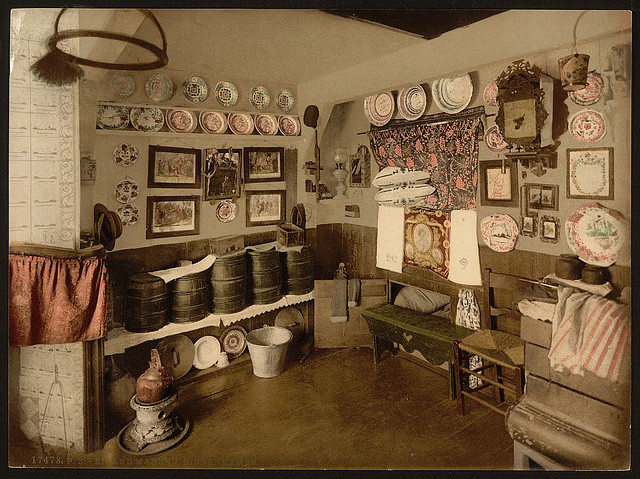(Image via)
The room I always start and end with when I am cleaning is the kitchen. Even though our kitchen is a tidy galley kitchen it is still the heart of the home and home base for the rest of the spring clean. I clean it first because it is the place that I go in and out of the most for supplies, washwater, rags, and anything else. The kitchen is generally the most detailed room of the house and will often take the largest part of one of my days but it really sets the tone for cleaning the rest of the house!
When doing deep cleaning it is generally assumed that you start at the top of the room and move down towards the floor so that you don't drip water or dirt on the things you have just cleaned. Cleaning, however, has to make logical sense for you so I actually start with the sink and countertops, making sure that the dishrack and any dishes are done and put away and that I have ample counter space to work on. If you need to modify an order than feel free to do it!
Here is my Kitchen Order:
- Do all dishes, dry and put them away.
- Clear off the countertops and do a quick clean.
- Dust ceiling picture rails, shelves.
- Remove ceiling light fixture and clean with warm soapy water in a sink that has been lined with towels (our ca. 1910 fixtures are irreplaceable so I'm very careful when I'm cleaning them.)
- Remove one shelf of goods at a time, toss what is not needed, wipe down the shelf and replace when dry for the upper cabinents.
- Wipe down the front of the cabinets with warm soapy water.
- Empty the top of the fridge, wipe down with warm soapy water. Dust and wash objects and reorganize as needed.
- Empty fridge, clean out inside with warm soapy water (I generally turn off the fridge for this clean) replace objects as needed.
- Empty freezer, wipe down inside of freezer, replace objects as needed.
- Wipe down the doors and body of the fridge with warm soapy water, shine with glass cleaner.
- Soak and was the antique insulators over the stove, dust the shelf.
- Clean out the warming drawer of the oven, the oven, and the broiler.
- Soak and scrub the range top pans and grill.
- Clean the stove exterior and shine with Windex. Shine chrome with vinegar/water mixture.
- Wipe down walls and tile backsplash with a damp rag.
- Empty cupboards and wash with a damp rag. Reorganize and declutter as needed.
- Wipe down the front of the cupboards, use vinegar/water mix to shine chrome on rail/handles.

